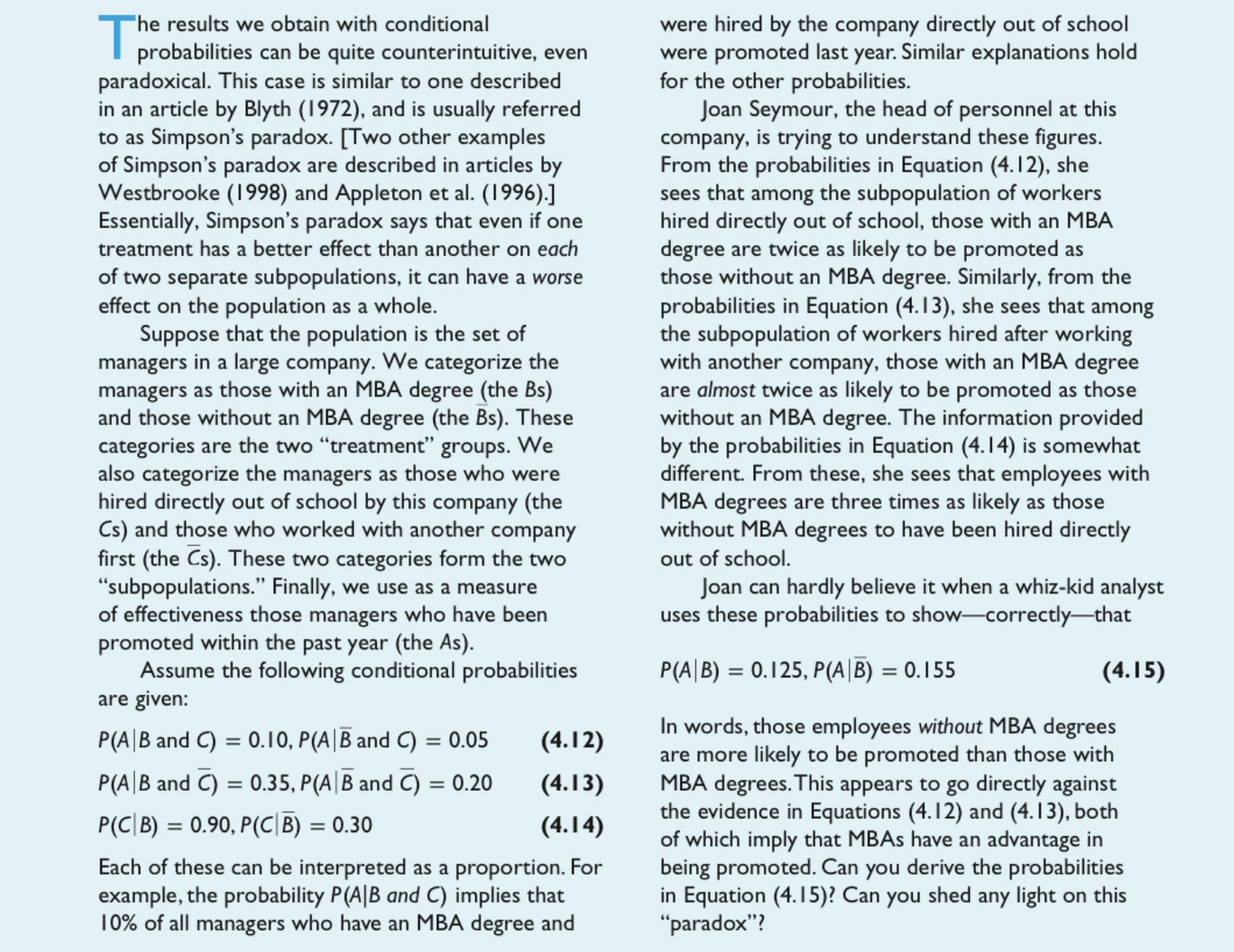Instructions: Write down the process to solve the problem
Hint: Use Bayes' Rule
he result: we obtain with conditional probabilities can be quite counterintuitive. even paradoxical. This case is similar to one described in an article by Blyth (I 972). and is usually referred to as Simpson's paradox. [Two other examples of Simpson's paradox are described in articles by Westbrooke (I998) and Appleton et al. 0996).] Essentially, Simpson's paradox says that even if one treatment has a better effect than another on each of two separate subpopulations. it can have a worse effect on the population as a whole. Suppose that the population is the set of managers in a large company. We categorize the managers as those with an MBA degree (the Bs) and those without an MBA degree (the BS). These categories are the two \"treatment" groups. We also categorize the managers as those who were hired directly out of school by this company (the Cs) and those who worked with another company rst (the Es). These two categories form the two "subpopulations." Finally. we use as a measure of effectiveness those managers who have been promoted within the past year (the As). Assume the following conditional probabilities are given: P(A|BandC) =0.I0.P(A|Eandq =0.05 (\"2) P(A|B and E) = 0.35.P(A|E and E) = 0.20 (4J3) P(CIB) = 0.90. P(C|E) = 0.30 (4.\") Each of these can be interpreted as a proportion. For example.the probability P(A|B and C) implies that I096 ofall managers who have an MBA degree and were hired by the company directly out of school were promoted last year. Similar explanations hold for the other probabilities. Joan Seymour. the head of personnel at this company. is trying to understand these gures. From the probabilities in Equation (4. l2). she sees that among the subpopulation of workers hired directly out of school. those with an MBA degree are twice as likely to be promoted as those without an MBA degree. Similarly. from the probabilities in Equation (4. l 3). she sees that among the subpopulation of workers hired after working with another company. those with an MBA degree are almost twice as likely to be promoted as those without an MBA degree. The information provided by the probabilities in Equation (4.|4) is somewhat different From these, she sees that employees with MBA degrees are three times as likely as those without MBA degrees to have been hired directly out of school. loan can hardly believe it when a whiz-kid analyst uses these probabilities to showcorrectlythat P(AIB) = 0.l25.P(AIB) = 0.l55 (4.l5) In words. those employees without MBA degrees are more likely to be promoted than those with MBA degrees.This appears to go directly against the evidence in Equations (4. l2) and (4.|3). bed: of which imply that MBAs have an advantage in being promoted. Can you derive the probabilities in Equation (4. | 5)? Can you shed any light on this \"paradox"







